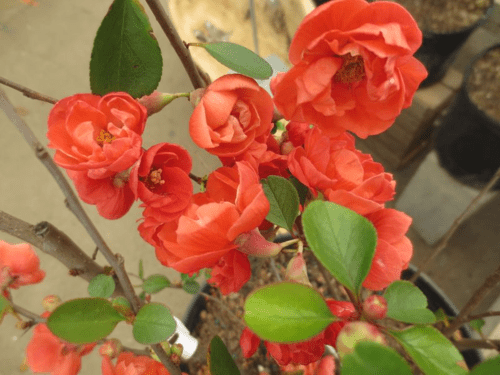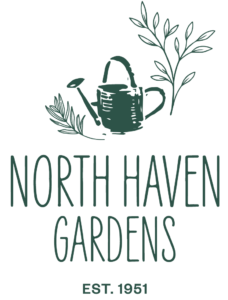Updated:February28,2024 Here at NHG, we know you love pretty blooms that are easy to plant,…
Winter-Blooming Shrubs I: Flowering Quince

At this time of year, the landscape is dominated by drab tones of green and brown. If you’re craving a dose of vibrant winter color, explore the bright beauty of these winter-blooming shrubs. Winter is a great time to add hardy shrubs to the landscape, and in addition to color and interest, these beautiful blooms provide pollen and nectar for insects whose food sources are limited during winter. For this first installment, Flowering Quince takes the spotlight:
Chaenomeles is a genus in the rose family comprised of three species of deciduous, often spiny shrubs. Native to mountainous woodlands in China and Japan, they are cultivated for their early flowers in March and April as well as for their small, apple-like fruits which mature in the fall. Sixty-plus years ago, C. japonica, with its clusters of single red flowers, added color to Dallas area landscapes (at that time, it was probably the only one available in cultivation). Today, there are numerous Chaenomeles hybrids available, each with vibrant blooms of varying structure and color. Here are three of them available at NHG now:
The ‘Storm’ series includes red, orange and pink flowering shrubs. These are three to four feet in height and width, require little maintenance, and can tolerate full sun, drought, and a variety of soils. They’re well-suited for landscape use as accent, specimen or border shrubs.
Chaenomeles japonica ‘Chojuraki’ has fragrant camellia-like double blossoms of a rich, orange/salmon color. It grows to four feet in height and width and tolerates full sun. It produces fruit which ripens in the fall and may be used in jellies, and the flowers are very attractive to pollinating insects. Because of its drought tolerance, it’s suitable for water-wise landscapes.
Chaenomeles japonica ‘Iwai Nishiki’ also has camellia-like flowers which are reddish, pink and white. It is prized in japan for its large flowers, and is frequently used as a bonsai specimen. It has a spreading growth habit and may be one to two feet in height and as much as 10 feet across. It also produces edible fruit, making it additionally valuable for wildlife, and has equal drought-tolerance in the landscape.
For our next installment, we’ll be looking at another winter-blooming landscape favorite, Forsythia. Come visit NHG soon to see these beautiful flowering quince—they’re just beginning to burst into bloom, and you’ll see firsthand why they deserve a place in your garden.
By Ann Grimes, MAg, NHG Garden Advisor

